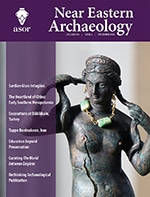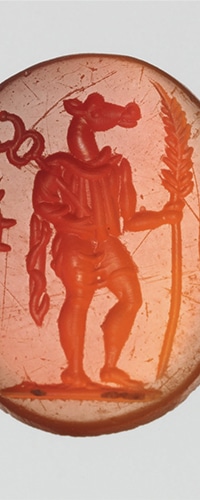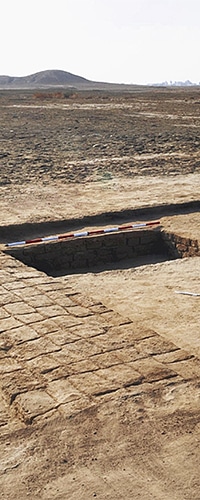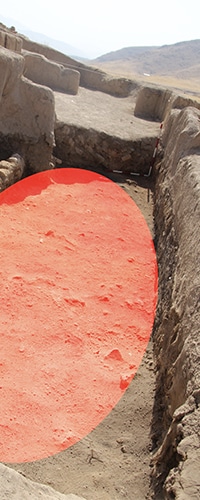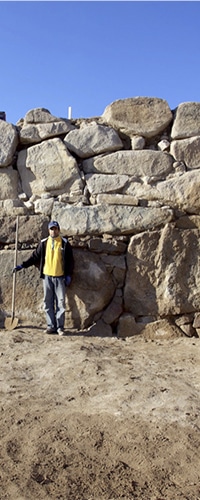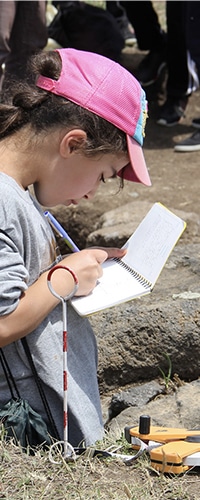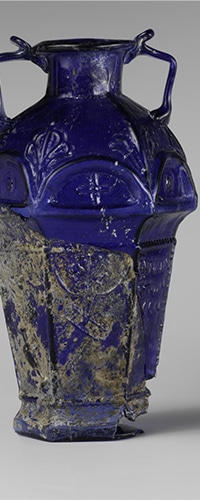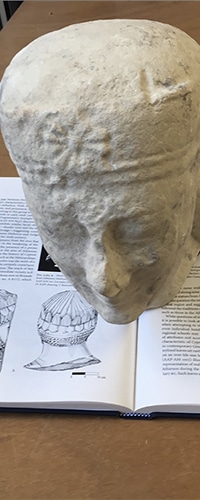
You can receive NEA (and other ASOR publications) through an ASOR Membership. Please e-mail the Membership office if you have any questions.
Pp. 200–209: “Adorning and Protecting: Glass Intaglios and the Changing Character of Being a Sardian in the Early Imperial Period,” by Jane DeRose Evans
Glass intaglios found on a hilltop in Sardis, Turkey are dated by archaeological context to the Augustan period. Iconographic details and the state of the intaglios show that they were made in Sardis, very likely near where they were found. The group of about forty gems gives us insight into the changing sociocultural history of the Sardians at a time when they are adapting to new political realities; they also give us a glimpse of favored motifs of the lower classes, in contrast to the magistrates who paid for local coinages and other euergistic projects.
ASOR Members with online access: navigate to the token link email sent to you (search for “token link” in inbox) before attempting to read this article. Once you have activated your member token, click here to access the above article on The University of Chicago Press Journals’ website.
Pp. 210–221: “Rediscovering the Heartland of Cities: Early Southern Mesopotamian States in Their Setting through New Field Research,” by Nicolò Marchetti andFederico Zaina
The 2016–2018 QADIS survey project is a joint Iraqi-Italian initiative aimed at achieving a new understanding of the processes that led to the formation and development of urban centers in central-southern Iraq from the fourth millennium BCE to modernity. The project applied an integrated methodology including a combined set of techniques, from remote sensing to aerial mapping, from archaeological surface collection to test soundings, from geoarchaeological investigation to the study of epigraphic materials. As a result, a more detailed reconstruction of the urban layout of several ancient Mesopotamian centers, as well as a comprehensive understanding of the cultural landscape of the region through time, is now possible.
ASOR Members with online access: navigate to the token link email sent to you (search for “token link” in inbox) before attempting to read this article. Once you have activated your member token, click here to access the above article on The University of Chicago Press Journals’ website.
Pp. 222–233: “A Newly Discovered Administrative Center of the Late Sasanian Empire: Tappe Bardnakoon, Farsan, Iran,” by Alireza Khosrowzadeh,Aliasghar Norouzi, andHossein Habibi
The two first seasons of excavation at the large settlement of Tappe Bardnakoon unearthed remarkable archaeological material, including huge architectural structures, a large corpus of 559 clay bullae and sealings, and collections of ceramics, gems, and metal and stone objects from the Sasanian period. The acquired data indicate that Bardnakoon is a hitherto unidentified administrative center of the late Sasanian Empire. The space excavated in Trench B possibly locates a repository at this center where the used sealings were kept. Given the location of the site in a region between different Sasanian provinces, its discovery offers new insights into the structural organization of the state. Further examination of the findings may cast light on the onomastica, either personal or place names, beliefs, and interregional interactions in a strategic yet largely overlooked region in the late-antique Central Zagros.
ASOR Members with online access: navigate to the token link email sent to you search for “token link” in inbox) before attempting to read this article. Once you have activated your member token, click here to access the above article on The University of Chicago Press Journals’ website.
Pp. 234–247: “New Evidence on Central Anatolia during the Second Millennium BCE Excavations at Büklükale,” by Kimiyoshi Matsumura
The circumstances behind the emergence of the Hittite kingdom remain one of the unsolved questions in Hittite history. In particular, the decades between the end of the kārum period and the establishment of Hattusa as the Hittite capital remain largely unknown. The site of Büklükale, a second-millennium BCE city situated on the banks of the Kızılırmak River in central Anatolia, is a promising candidate for filling this gap. Eleven years of research have revealed a large-scale, fortified city that was settled throughout the second millennium BCE. In the excavations on the citadel area, traces of intensive settlement in the Hittite period and a substantial building constructed using cyclopean masonry in the kārum period were found, indicating continued settlement into the Hittite period. Finds such as a Hattian foundation ceremony, a Hurrian glass bottle, and early Luwian hieroglyphs also reveal the multicultural character of the site. Its multicultural nature may be a clue to comprehending the emergence process of the Hittite Kingdom in Anatolia.
ASOR Members with online access: navigate to the token link email sent to you (search for “token link” in inbox) before attempting to read this article. Once you have activated your member token, click here to access the above article on The University of Chicago Press Journals’ website.
Pp. 248–255: “Education beyond Preservation: An Archaeological Camp for Girls in Armenia,” by Lori Khatchadourian
Since the early 2000s, public archaeology has begun to ask how archaeological education can be unfettered from preservation and stewardship, instead responding to wider educational or social needs among the publics it is meant to serve. This new direction in archaeological education has yet to influence informal education programs offered in the context of research-based fieldwork, particularly in southwest Asia. In 2017 and 2018, the Aragats Foundation, a nonprofit organization affiliated with the American-Armenian research initiative known as Project ArAGATS, organized an archaeological camp for girls in the Republic of Armenia. This program was designed in response to social-justice concerns surrounding gender inequality in Armenia and disparities in opportunities between rich and poor, as well as urban and rural children. The camp harnessed the full research capacities of Project ArAGATS to provide girls with a multidimensional, hands-on learning experience that emphasized science and technology over heritage preservation.
ASOR Members with online access: navigate to the token link email sent to you (search for “token link” in inbox) before attempting to read this article. Once you have activated your member token, click here to access the above article on The University of Chicago Press Journals’ website.
Pp. 256–263: “Curating The World Between Empires: Art and Identity in the Ancient Middle East,” by Blair Fowlkes-Childs andMichael Seymour
The World between Empires was an international loan exhibition held at The Metropolitan Museum of Art from March 18 through June 23, 2019 that featured nearly 190 works of art from twenty museums in the Middle East, Europe, and the U.S. as well as from the Met’s collection. The exhibition covered the period when the Roman and Parthian Empires competed for control of the Middle East and its trade routes (ca. 100 B.C.–A.D. 250), and was focused on how the cultural, religious, and personal identities of people and communities in the region that formed the imperial border were expressed through art. The two curators discuss the curatorial process and why The World between Empires represented an exceptional opportunity both to disseminate recent scholarship and to contribute to research on the art, history, religions, and culture of the Middle East during the Roman and Parthian period. Several of the iconic archaeological sites included in the exhibition, including Palmyra and Dura-Europos in Syria and Hatra in Iraq, have suffered extensive damage in recent years, and the curators offer their thoughts on their efforts to include a nuanced discussion of the destruction of cultural heritage in conjunction with ongoing humanitarian crises, and of current and future responses.
ASOR Members with online access: navigate to the token link email sent to you (search for “token link” in inbox) before attempting to read this article. Once you have activated your member token, click here to access the above article on The University of Chicago Press Journals’ website.
Pp. 264–269: “A Square Peg in a Round Hole: Rethinking Archaeological Publication,” by Kevin Garstki, Derek B. Counts, Erin Walcek Averett, Sarah Whitcher Kansa, and Eric C. Kansa
This essay offers a first-hand look at how one archaeological project (the Athienou Archaeological Project on Cyprus) decided to rethink the definition of “final” and contribute to the growing discourse surrounding 3D visualization, archaeological publication, archival data, and access.
ASOR Members with online access: navigate to the token link email sent to you (search for “token link” in inbox) before attempting to read this article. Once you have activated your member token, click here to access the above article on The University of Chicago Press Journals’ website.
